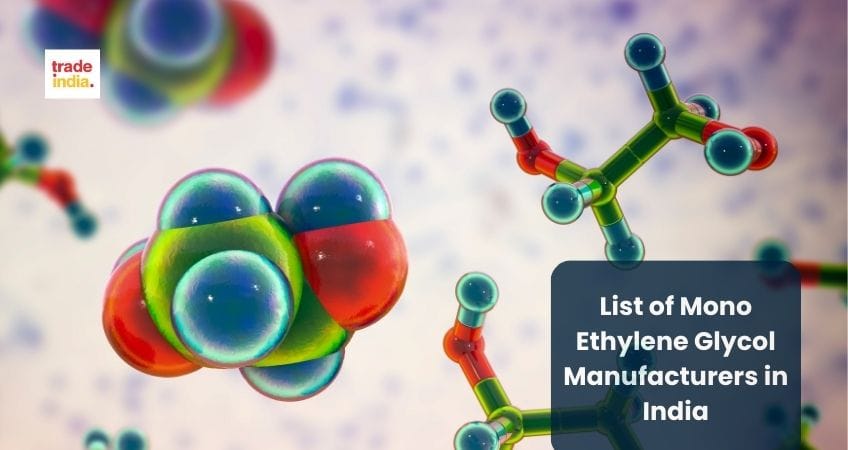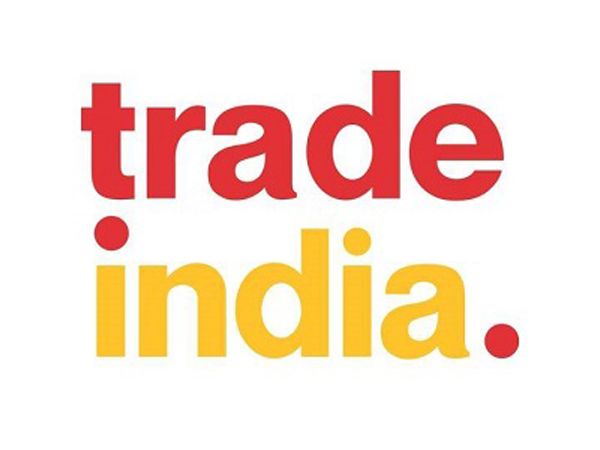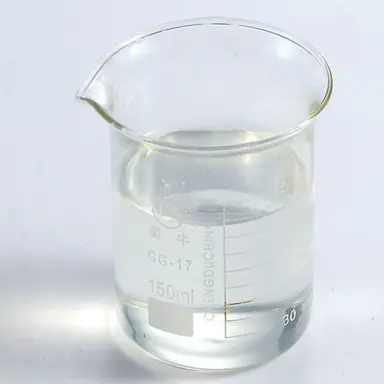List of Mono Ethylene Glycol Manufacturers in India

Monoethylene glycol (MEG) is one of the crucial chemical compounds widely used in the production of antifreeze solutions, polyester fibres, and various chemical intermediates.
Indian Mono Ethylene Glycol (MEG) Synopsis
India has seen a significant rise in the demand for MEG in recent years due to the growing use of PET bottles, containers, and packaging materials. The increasing needs of automobiles in India have also fueled the development of MEG across the country.
In addition to this, the government has also taken varied initiatives to boost the production of chemicals in the nation, which has further enhanced the chances of the development of new manufacturing facilities for ethylene glycol. Several companies in India are investing in production as well as research and development activities to produce effective chemicals for different applications.
In this blog, you will find a comprehensive guide to the top monoethylene glycol manufacturers in India, contributing to the chemical industry.
List of Monoethylene Glycol Manufacturers in India
1. Reliance Industries Limited:
Established in 1966, RIL has evolved into one of the largest companies in India and globally. It is one of India's largest monoethylene glycol manufacturers with a well-equipped manufacturing unit located in Hazira, Gujarat. It meets the demands of the chemicals with a commitment to quality, sustainability, and innovation.
2. JBF Industries Limited:
JBF Industries Limited is one of the prime monoethylene glycol dealers in India. This Indian multinational company has manufacturing facilities in Maharashtra and Gujarat to produce MEG that meets international quality standards. The company was founded in 1982 as a small-scale manufacturer of polyester films. Today, it has different manufacturing facilities and offices in the United States, Belgium, and the United Arab Emirates.
3. SABIC (Saudi Basic Industries Corporation):
SABIC has a state-of-the-art manufacturing facility in Vadodara, Gujarat to develop high-quality MEG in bulk. The company was founded in 1976 to develop a robust petrochemical industry. It is a publicly owned company listed on the Tadawul Stock Exchange in Riyadh.
4. Indian Oil Corporation Limited:
Indian Oil Corporation Limited (IOCL) is one of the prime mono ethylene glycol suppliers in India. Established in 1964, it is a government-owned corporation working under the administrative control of the Ministry of Petroleum and Natural Gas in the Government of India. It has been operating a petrochemical complex in Panipat, Haryana, and producing high-quality products. Its corporate headquarters are located in New Delhi, India, with subsidiaries and joint ventures in different countries.
5. India Glycols Limited:
The company has been playing a crucial role in meeting the growing demands for MEG and contributing to the economic development of the country. It is based in Noida, Uttar Pradesh, with an advanced manufacturing unit in Kashipur, Uttarakhand. It has been offering high-quality products using eco-friendly and modern production methods.
6. Manali Petrochemicals Limited:
Manali Petrochemicals Limited, located in Chennai, Tamil Nadu, has gained expertise in the development of MEG. Established in 1986, the company has modern manufacturing facilities in Manali, Chennai, and other locations in India.
7. Deepak Fertilisers and Petrochemicals Corporation Limited:
The company is located in Pune, Maharashtra, and has a strong presence in the Indian market. It offers optimum-quality MEG with the help of a well-equipped manufacturing facility in Taloja, Maharashtra. Founded in 1979, the company has established itself as a notable player in the Indian industry by offering innovative and quality-tested solutions to its customers.
8. Mangalore Refinery and Petrochemicals Limited (MRPL):
Mangalore Refinery and Petrochemicals Limited is a subsidiary company of the Oil and Natural Gas Corporation (ONGC). The company was established in 1988 in Mangalore, Karnataka, to offer the best-quality MEG.
9. Sanmar Group:
The Sanmar Group is located in Chennai, India, to produce optimum quality MEG. Founded in 1994 by A. S. Subramanian, the group has expanded its business into different sectors, from chemicals to engineering to shipping.
10. The Bombay Oil Industries:
Boasting state-of-the-art manufacturing facilities, an experienced team, and a robust distribution network, Bombay Oil Industries has become one of the key monoethylene glycol manufacturers. This is a renowned company with a rich history spanning decades. Established in 1935 in Mumbai, Maharashtra, it has emerged as a leading player in the domain of MEG.
FAQs: Mono ethylene glycol
Q. What is monoethylene glycol and what are its primary uses?
Ans. Monoethylene glycol (MEG) is a colourless, odourless, and sweet-tasting organic compound. This versatile chemical compound is widely used in various industrial applications owing to its unmatched physical and chemical properties.
Q. Primary Uses of Monoethylene Glycol (MEG):
Ans. This is used as an antifreeze and coolant in automotive engines, as it lowers the freezing point and increases the boiling point of water.
This is used in the production of polyester resins, plastics, and composite materials.
This is used as a fundamental building block in the manufacturing of PET.
This is used as a hydrate inhibitor to prevent the formation of gas hydrates.
This is used in HVAC systems as a heat transfer fluid.
This is used in skin creams, lotions, and toothpaste.
This is used as a starting material for the development of glycol ethers and other chemicals.
This is used as an ingredient in deicing solutions.
This is used as a humectant in the food industry to preserve moisture content and flavour.
Q. How does monoethylene glycol differ from other glycols, such as ethylene glycol or diethylene glycol?
Ans. Monoethylene glycol (MEG), ethylene glycol (EG), and diethylene glycol (DEG) have chemical structures and different molecular formulas, properties, and applications.
|
|
Monoethylene Glycol (MEG) |
Ethylene Glycol (EG) |
Diethylene Glycol (DEG) |
|
Molecular Formula |
C2H6O2 |
C2H6O2 |
C4H10O3 |
|
Number of Hydroxyl (OH) Groups |
One hydroxyl group (OH) per molecule |
One hydroxyl group (OH) per molecule |
Two hydroxyl groups per molecule |
|
Physical Properties |
Colorless, odorless, and sweet-tasting liquid at room temperature |
Colorless, odorless liquid |
Colorless and odorless liquid at room temperature |
|
Freezing point |
-12°C (10.4°F) |
-13°C (8.6°F) |
-10°C (14°F) |
|
Boiling point |
197°C (386.6°F) |
197.3 °C |
244°C (471.2°F) |
|
Uses |
Production of polyester resins and fibers, antifreeze formulations, personal care products and pharmaceuticals. |
HVAC systems, deicing solutions, automotive and heating systems. |
Production of resins, plastics, etc. |
Q. Are there any potential health or environmental concerns associated with monoethylene glycol?
|
Health Concerns |
Environmental Concerns |
|
Skin and Eye Irritation: It can cause skin and eye irritation upon contact. Hence, always wear appropriate protective gear like gloves and goggles to prevent skin and eye exposure.
Ingestion and Toxicity: Its consumption is harmful to both humans and animals. Its ingestion can lead to different health concerns such as gastrointestinal distress, nausea, vomiting, kidney and central nervous system damage.
Respiratory Sensitization: Its vapors may lead to respiratory sensitization. Therefore, adequate ventilation should be maintained and respiratory protection should be taken. |
Biodegradability: It is biodegradable in nature and its biodegradability rate depends on different factors such as temperature, pH, etc. Its proper disposal is important to minimize environmental impact.
Aquatic Toxicity: It negatively affects aquatic organisms, hence, always prevent its spilling in water.
Eutrophication: It leads to eutrophication and harms aquatic ecosystems. |
Q. Can monoethylene glycol be used as a coolant or antifreeze in automotive applications?
Ans. Yes, monoethylene glycol (MEG) can be used as a coolant or antifreeze in automotive applications for the following reasons:
to lower the freezing point of the liquid and prevent the cooling system from freezing.
to increase the boiling point of the coolant and help it work at higher temperatures.
to prevent corrosion of the engine and cooling system components.
to efficiently absorb and transfer heat away from the engine.
to extend the life of the water pump seals.
to reduce the chances and risk of cavitation.
Q. Are there any regulations or guidelines governing the use of monoethylene glycol in different industries?
Ans. Yes, there are regulations and guidelines governing the use of monoethylene glycol (MEG) in various industries to ensure environmental compliance, product quality and safety. Following are some of the regulations and guidelines:
Automotive Industry Standards: The Society of Automotive Engineers (SAE) sets the standards forautomotive to ensure the quality and performance of cooling systems and antifreeze products.
Petrochemical Industry Standards: In the petrochemical and chemical industries, organizations publish standards and test methods to ensure consistent product quality and performance.
Trade and Export Regulations: International trading agencies of chemicals impose trade and export regulations to protect national security interests.
Occupational Safety and Health: It contains guidelines for safe handling, storage, and use of chemicals.
Q. Environmental Regulations: Environmental agencies regulate the safe discharge and disposal of MEG.
Ans. Chemical Classification and Labeling: MEG is properly labeled as per the international chemical hazard communication standards to ensure safe handling.
Food and Drug Regulations: Regulatory agencies for Food and Drug set rules for the safe and effective use of chemicals in food and pharmaceutical applications.
Product Safety Data Sheets (SDS): Mono ethylene glycol manufacturers provide Safety Data Sheets (SDS) with information on safe handling, disposal, storage, and emergency response procedures. They are important for providing safety information to users. Non-compliance with these regulations can lead to risks to worker safety and public health.
Explore More:
- List of Top 10 Diethylene Glycol Manufacturers in India
- Chemical Industry: Challenges and Opportunities in the Era of AI
- Importance of Calcium Chloride in Chemical Business [2024]
- List of Best Fatty Acid Manufacturing Companies in India
- Opportunity for India to Become a Global Agrochemical Manufacturing Hub

